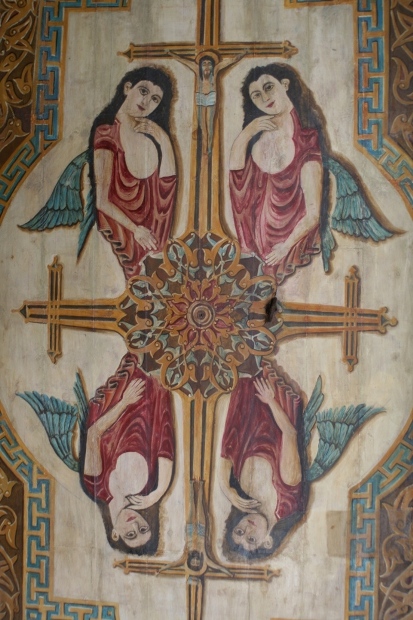|
Coptic Cairo: Witnessing Cairo’s
growth and evolution
Peaceful co-existence can’t go unnoticed while strolling down
Cairo’s humble, historic
alleys or driving up its lavish districts. It is only in this historic
city, where Churches and Mosques harmoniously stand side-by-side
to narrate harsh tests of time, where religious unity proved to
be as solid as the Great Pyramids
of Giza. Both religions have -for long- formed the rich layers
interweaving, and even overlapping at times to shape Egypt’s identity.
Hence, setting the country ahead of its counterparts in the Arab
world with a distinct cultural flavor- not sensed nor seen any other
place in the world.
 The
call for prayer echoes Old Cairo’s narrow alleys-locally known as
"Masr El Qadima" for Muslims to hurry to the nearby Mosque of "Amr
Ibn Al -Aas" while The Hanging
Church's bells pleasantly ring on Sunday morning, calling on
Christians to attend public service. Both Christians and Muslims
walk side by side in the street, exchanging warm greetings and sincere
smiles, as they head to pray. A typical scene reinforcing why Egypt
is a country rich with its diversity and absolute pluralism, with
the Orthodox Christian district of Old Cairo as a dynamic living
proof. The
call for prayer echoes Old Cairo’s narrow alleys-locally known as
"Masr El Qadima" for Muslims to hurry to the nearby Mosque of "Amr
Ibn Al -Aas" while The Hanging
Church's bells pleasantly ring on Sunday morning, calling on
Christians to attend public service. Both Christians and Muslims
walk side by side in the street, exchanging warm greetings and sincere
smiles, as they head to pray. A typical scene reinforcing why Egypt
is a country rich with its diversity and absolute pluralism, with
the Orthodox Christian district of Old Cairo as a dynamic living
proof.
Before the arrival of Islam, Egypt was predominately a Christian
country with Alexandria
as its thriving capital. Hence, magnificent architectural structures
were built commemorating Christianity- particularly because Egypt
has been of remarkable Christian significance, due to the Holy Family’s
visit (in search of shelter from Herod’s “massacre of the innocent”)-.
However, the Arab conquest in 641 AD changed the existing capital
“Alexandria”
to a new, independent capital overlooking the River Nile. The Arabs
besieged a fortress in an area, whose present structure dates to
the fourth century, known as the Babylon of Egypt. The area was
named “ Old Cairo”, setting the future foundation of what we aptly
known as Coptic Cairo. Today, Coptic Cairo is the oldest part of
the modern city and an awe-inspiring tourist haven. Its fascination
lies in the fact that strolling down its narrow alleys is like flipping
through the pages of a captivating history book. Visitors will start
their walk at the walls of the Roman- Byzantine fortress, through
the vault where Virgin Mary and Jesus hid from Roman soldiers, to
Coptic Churches and a Jewish synagogue, on to Al- Fustat’s archeological
remains, where Islam was brought to Egypt. Wear comfortable shoes,
and grab plenty of water to start a memorable journey in an area
rich with diversity and hospitability.
Getting there and about:
Coptic Cairo can be best reached by Metro. It is recommended to
take the Metro line “ Sadat”, which heads four stops south from
Tahrir Square (Midan Al Tahrir) to Mar Girgis. For travelers who
would like to try a sedate mode of transportation, River buses are
available, departing from the Corniche -just in front the Arab Television
Building/Mabna Al Ezaa w al Televezyon-. The buses drop visitors
at the landing stage, which is a few minutes walk to Coptic Cairo.
For visitors going by car, Coptic Cairo can be easily reached by
turning south from Salah Salem Street, and park by the Mosque of
Amr Ibn Al- Aas on the left to start the discovery tour. Once visitors
arrive, they’ll be struck by both the magnificence of the Hanging
Church, and Coptic Museum imposing at the area’s entrance. It is
recommended that visitors walk down the stepped entrance to the
north, which leads to an alley with a concentration of Churches,
cemeteries and the area’s famous synagogue. Geographically, Old
Cairo also encloses the southern tip of Roda Island at Manial, enabling
visitors to include the
Nilometer in their
discovery tour.
Continue Reading about Coptic Cairo (1 -
2 -
3)
next >>
|
|
